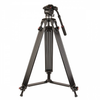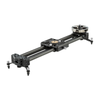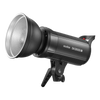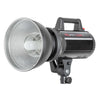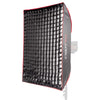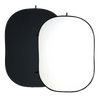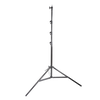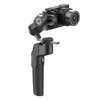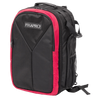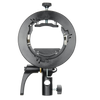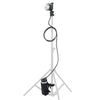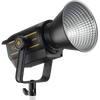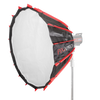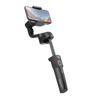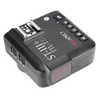Can You Use HSS to Freeze Motion?
One of the misconceptions about High Speed Sync (HSS) is that it is designed for freezing motion and action in photos such as for sports photography or when capturing mischievous animals. However, this is not the case!
While you can get good results from using HSS when freezing movement, most of the time you will actually get a better result from using normal sync on your lights with a higher power. HSS, instead, is designed to overpower any ambient light in your scene rather than for the purpose of freezing action contrary to popular belief. This could be in situations such as: shooting outside in sunlight, shooting indoors in an area where you can't control the overhead lighting or light from windows.
However, as mentioned, trying to use HSS to achieve frozen motion won't be as effective as using normal sync.
Freezing motion is dependant on the flash duration specifically. For example, the STORM MKIII series has a high flash duration of 1/530s - 1/26,100s, meaning the flash is super fast and therefore can look like it freezes the motion as it captures such a tiny part of the movement.
Here are some issues you might come up against if trying to use HSS to freeze action:
- You'll lose power. Fitting the flash into such a short period means that you'll lose a certain amount of power from your flash as it fits into this small timeframe.
- You'll compromise your depth of field.
- HSS can cause a colour cast. HSS, when compared with normal sync, can affect the colour of your image. This is a standard with HSS across all brands of lights, but it is rarely spoken about. This can often be combatted by using a Colour Stable Mode, which is available on our STORM series of flashes, but still can cause extra work if HSS is used unnecessarily.
- There may still be some motion blur! HSS will freeze motion fairly well, and the resulting images may be serviceable, but you will get more blur in your images than if you used normal sync. For the most effective sharp results, HSS is generally advised to be avoided.

So overall, while, yes, you can create good frozen motion images with HSS, it might be best to avoid it if you need the image to be as sharp and clean as you can get it. Check out Richard Bradbury's video below which shows Normal Sync and HSS frozen motion images side by side so you can see exactly what kind of impact it will have on your work.








































